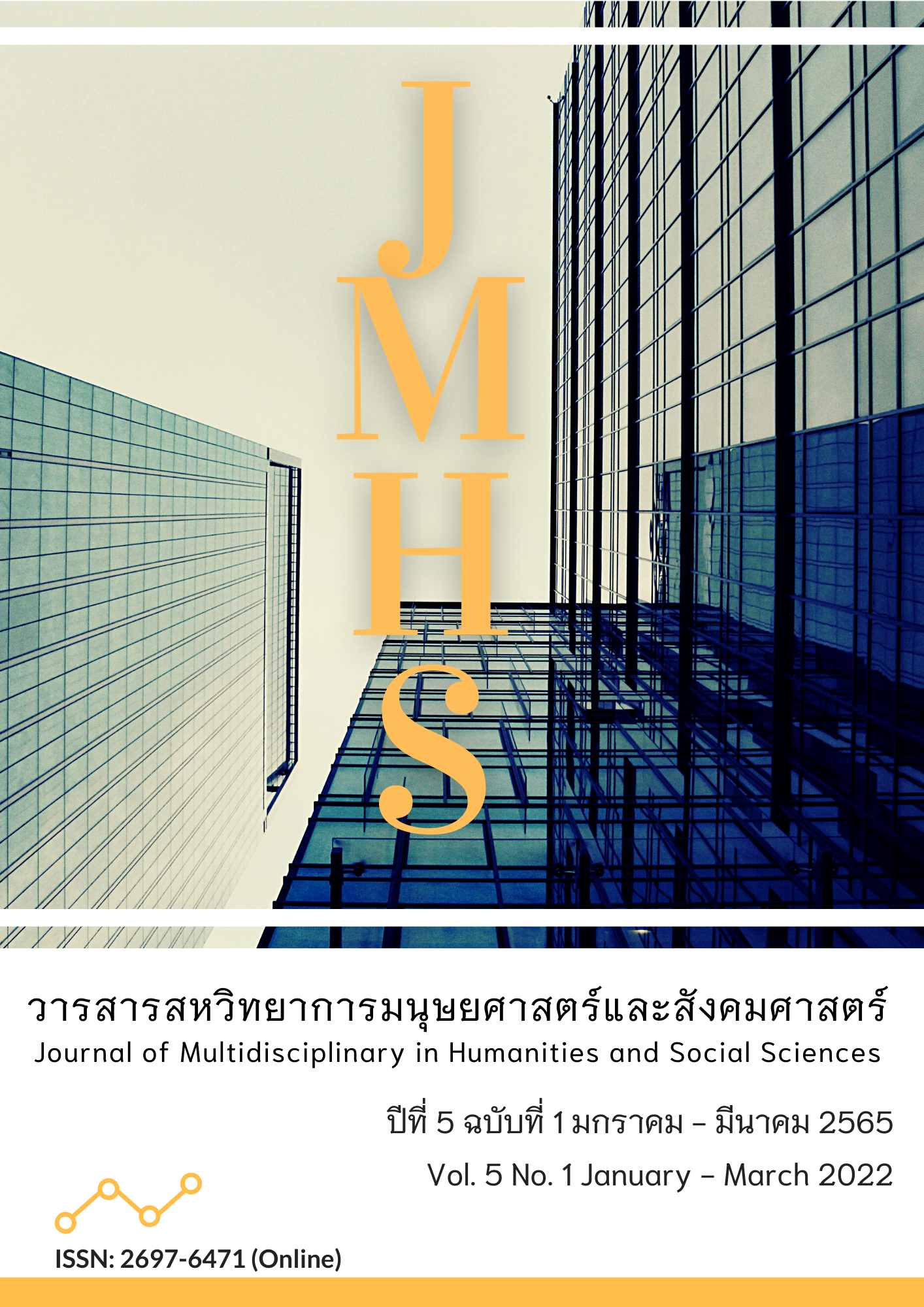Strategic Management and Human Resource Development of Private School in Ratchaburi Province
Main Article Content
Abstract
This article aimed to study 1) the strategic management of private schools in Ratchaburi province; 2) the human resource development of private schools in Ratchaburi province; and 3) the relationship between strategic management and human resource development of private schools in Ratchaburi province. This research was descriptive research. The research sample consisted of 28 private schools in Ratchaburi province. The key performants in each school were two, consisting of a licensee or director or deputy director and two teachers. A total of 112 of the researcher's instruments were questionnaires about strategic management and other concepts and human resource development. The statistics used to analyze the data were frequency, percentage, arithmetic, mean, standard deviation, and Pearson's correlation coefficient. The results showed that:
1. Strategic management of private schools in Ratchaburi province in overall was at high level, considering by aspects has found at high level in all aspects. Sorted according to the arithmetic mean from descending as follows: scanning the environment, strategic formulation, evaluation and control and strategy implementation.
2. The overall human resource development of private schools in Ratchaburi province was at a high level, considering by aspect, it was found at a high level in all aspects. Sorted according to arithmetic mean from descending as follows: human resource development evaluation, the Implementation of human resource development evaluation, the implementation of human resource development, assessing human resource development needs and human resource development programs design.
3. Strategic management was statistically correlated with human resource development at the .01 level.
Article Details

This work is licensed under a Creative Commons Attribution-NonCommercial-NoDerivatives 4.0 International License.
Views and opinions appearing in the Journal it is the responsibility of the author of the article, and does not constitute the view and responsibility of the editorial team.
References
กมลชนก ชมพูพันธุ์. (2564). แนวทางการพัฒนาภาวะผู้นำเชิงนวัตกรรมในธุรกิจยุคดิจิทัล. วารสารนวัตกรรมการศึกษาและการวิจัย, 5(1), 148-155.
ขัตติยา ด้วงสำราญ. (2564). ศึกษาความสัมพันธ์ภาวะผู้นำของผู้บริหารกับการระดมทรัพยากรของโรงเรียนมัธยมศึกษา สังกัดสำนักงานคณะกรรมการการศึกษาขั้นพื้นฐาน. วารสารศิลปการจัดการ, 5(2), 501-512.
จุมพล โพธิสุวรรณ. (2564). พฤติกรรมผู้นำเชิงยุทธศาสตร์. วารสารสหวิทยาการมนุษยศาสตร์และสังคมศาสตร์, 4(1), 135-148.
ชโนทัย เจริญเนือง, ณรงค์ พิมสาร และ สิริกาญจน์ ธนวุฒิพรพินิต. (2563). กลยุทธ์บริหารงานวิชาการของโรงเรียนเอกชนระดับประถมศึกษาจังหวัดประจวบคีรีขันธ์. วารสารมนุษยศาสตร์และสังคมศาสตร์ มหาวิทยาลัยธนบุรี, 14(3), 31-41.
ทิพสุคนธ์ บุญรอด และ มัทนา วังถนอมศักดิ์. (2564). ภาวะผู้นำมุ่งบริการของผู้บริหารสถานศึกษากับคุณภาพชีวิตการทำงานของครูสังกัดสำนักงานเขตพื้นที่การศึกษามัธยมศึกษา เขต 9. วารสารศิลปการจัดการ, 5(2), 486-500.
ธีระ รุญเจริญ. (2554). รายงานการวิจัย เรื่องสภาพและปัญหาการบริหารและการจัดการการศึกษาขั้นพื้นฐานของสถานศึกษาในประเทศไทย. กรุงเทพฯ: สำนักงานคณะกรรมการการศึกษาแห่งชาติ สำนักนายกรัฐมนตรี.
เปี่ยมพร ตังตระกูลไพศาล, พฤทธิ์ ศิริบรรณพิทักษ์ และ เพ็ญวรา ชูประวัติ. (2563). กลยุทธ์การบริหารแบรนด์โรงเรียนเอกชนตามแนวคิดการลดภาระงบประมาณแผ่นดินด้านการศึกษา. วารสารครุศาสตร์, 48(4), 236-256.
พระมหากันตินันท์ เฮงสกุล. (2564). เทคโนโลยีสารสนเทศเพื่อการบริหารการศึกษา. วารสารนวัตกรรมการจัดการศึกษาและการวิจัย, 3(1), 1-10.
ไพผกา ผิวดำ. (2564). ชุมชนแห่งการเรียนรู้ทางวิชาชีพสู่ความสำเร็จของสถานศึกษา. วารสารนวัตกรรมการจัดการศึกษาและการวิจัย, 3(1), 11-18.
รัชพล เชิงชล. (2561). การบริหารเชิงกลยุทธ์ของผู้บริหารกับการพัฒนาทรัพยากรมนุษย์ในสถานศึกษาขั้นพื้นฐาน สังกัดสำนักงานเขตพื้นที่การศึกษาประถมศึกษาสมุทรปราการ เขต 1. วารสารศึกษาศาสตร์ มหาวิทยาลัยศิลปากร, 16(2), 57-73.
สำนักงานคณะกรรมการส่งเสริมการศึกษาเอกชน. (2554). พระราชบัญญัติโรงเรียนเอกชน พ.ศ. 2550 แก้ไขเพิ่มเติม (ฉบับที่ 2) พ.ศ.2554. กรุงเทพฯ: โรงพิมพ์ ส.ก.ส.ค. ลาดพร้าว.
โสมวลี ชยามฤต. (2564). การพัฒนาทรัพยากรมนุษย์เพื่อรองรับยุคดิจิทัลขององค์การภาครัฐและเอกชน. วารสารสหวิทยาการมนุษยศาสตร์และสังคมศาสตร์, 4(1), 38-50.
Damnoen, P. S., Phumphongkhochasorn, P., Pornpitchanarong, S., & Nanposri, N. (2021). Development of Strategies for the Use of Innovative Information in Education for Secondary Schools under the Office of the Basic Education Commission in the Eastern Region. Turkish Journal of Physiotherapy and Rehabilitation, 32(3), 20483–20490.
Desimone, R. L., Werner, J. M., & Harris, D. M. (2002). Human Resource Development. (3rd ed) Orlando, Harcourt College Publishers.
Krejcie, R. V., & Morgan, D. W. (1970). Determining sample size for research activities. Educational and Psychological Measurement, 30(3), 607–610.
Songsraboon, R., Thongtao, J., Damnoen, P. S., & Huanjit, P. S. (2021). Course Management Based on Outcome-Based Education (OBE) of Learning by Working in Real Conditions. Turkish Journal of Physiotherapy and Rehabilitation, 32(3), 20491–20499.
Wheelen, T. L., & Hunger, J. D. (2012). Strategic Management and Business Policy: Toward Global Sustainability. (13th ed.). New Jersey: Prentice-Hall.


